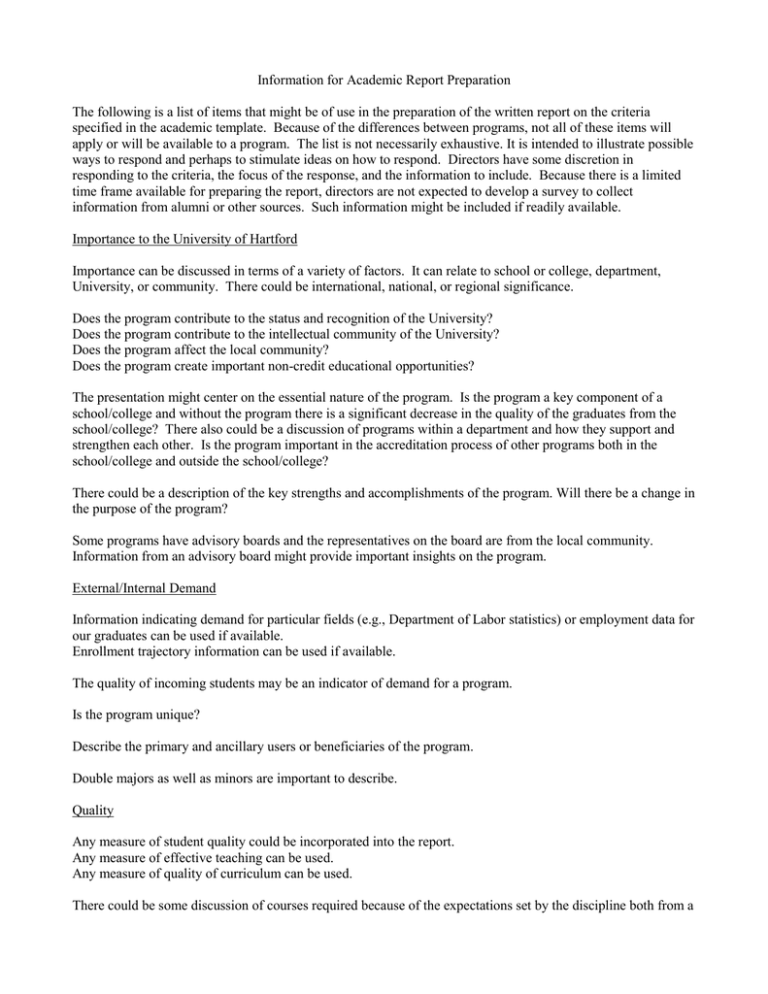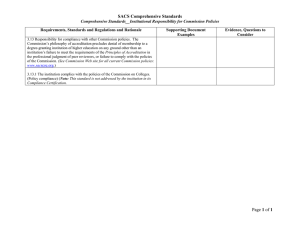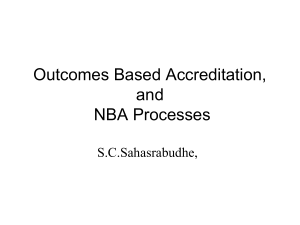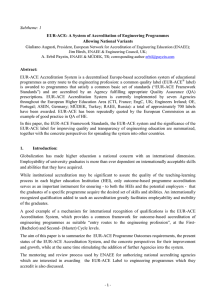Information for Academic Report Preparation
advertisement

Information for Academic Report Preparation The following is a list of items that might be of use in the preparation of the written report on the criteria specified in the academic template. Because of the differences between programs, not all of these items will apply or will be available to a program. The list is not necessarily exhaustive. It is intended to illustrate possible ways to respond and perhaps to stimulate ideas on how to respond. Directors have some discretion in responding to the criteria, the focus of the response, and the information to include. Because there is a limited time frame available for preparing the report, directors are not expected to develop a survey to collect information from alumni or other sources. Such information might be included if readily available. Importance to the University of Hartford Importance can be discussed in terms of a variety of factors. It can relate to school or college, department, University, or community. There could be international, national, or regional significance. Does the program contribute to the status and recognition of the University? Does the program contribute to the intellectual community of the University? Does the program affect the local community? Does the program create important non-credit educational opportunities? The presentation might center on the essential nature of the program. Is the program a key component of a school/college and without the program there is a significant decrease in the quality of the graduates from the school/college? There also could be a discussion of programs within a department and how they support and strengthen each other. Is the program important in the accreditation process of other programs both in the school/college and outside the school/college? There could be a description of the key strengths and accomplishments of the program. Will there be a change in the purpose of the program? Some programs have advisory boards and the representatives on the board are from the local community. Information from an advisory board might provide important insights on the program. External/Internal Demand Information indicating demand for particular fields (e.g., Department of Labor statistics) or employment data for our graduates can be used if available. Enrollment trajectory information can be used if available. The quality of incoming students may be an indicator of demand for a program. Is the program unique? Describe the primary and ancillary users or beneficiaries of the program. Double majors as well as minors are important to describe. Quality Any measure of student quality could be incorporated into the report. Any measure of effective teaching can be used. Any measure of quality of curriculum can be used. There could be some discussion of courses required because of the expectations set by the discipline both from a 2 historical and a current point of view. Information on incoming student performance on the SAT, or high school GPA averages could be used. Accreditation information and the requirements for accreditation might provide an indication of quality. Additional information on the requirements for accreditation such as workload or the number of required faculty may help illustrate the quality of the program. Indicate the value of accreditation to graduates. Information on community service and career accomplishments might indicate quality. Information on various ratios can be used to help support discussion of quality (full-time to part-time faculty, faculty to student). Scholarship information or external funding might support the discussion of quality. A description of changes in the curriculum and the relationship to quality could be incorporated. Is the program taking steps to keep the program current? Income/Costs Unusual expenses or income in a particular year should be discussed. A program's income/costs might be compared to similar programs at other institutions if information is available. Future income or costs that may be different than the current values can be part of the discussion. Discuss trends in income over costs. Technology may play a role in changing the cost or income for a program. If expenses exceed income, describe how this situation can be effectively addressed. Can a net loss for a program be addressed? Discuss any long-range plans to increase income for the program. Discuss efficiencies that could improve the income performance of the program. Have significant investments been made in the program in recent years? Describe the results. Has the program used limited resources effectively? Do unpaid overloads help support the program? Opportunity/Barrier Analysis Any issue that hampers the program can be discussed. The discussion is not limited to space, technology, equipment, or personnel. With additional support, would the program be able to create a more positive return on the resources provided? Discussion can include opportunities for re-organizing or re-structuring, or combining resources in some way. Discuss opportunities to collaborate with other programs within or outside of the school/college. Think beyond the status quo. To the extent possible, focus on future possibilities.



